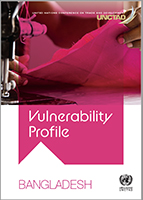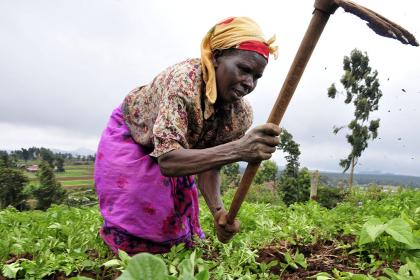
This report presents the vulnerability profile of Bangladesh, as mandated in General Assembly resolution 59/209 of 20 December 2004, which stated that “after a country has fulfilled the criteria for graduation for the first time, UNCTAD is mandated to prepare a vulnerability profile on the identified country to be considered by the Committee for Development Policy (CDP) at its following triennial review” (paragraph 3 (b)).
The report is meant to be used as a background document for the CDP deliberations (to be held in 2021) on the preparedness of Bangladesh for graduation from the least developed country (LDC) category. As such, the vulnerability profile serves several purposes:
-
To inform CDP in its assessment of the economic and social progress observed in Bangladesh, first through the country’s performance under the three eligibility criteria considered for LDC inclusion/graduation, namely per capita income, human assets index (HAI) and economic and environmental vulnerability index (EVI), and secondly through other evidence-based considerations as deemed necessary.
-
To provide the Government of Bangladesh with a broad range of findings that may enrich the debate on preparations for LDC graduation.
-
To offer some concrete insights on potential elements of a smooth transition strategy to post-LDC status, in line with the corresponding mandate in General Assembly resolutions 59/209 (20 December 2004) and 67/221 (21 December 2012).
The report is structured as follows.
-
Section two contextualizes the trajectory of Bangladesh through an analysis of its growth and structural transformation pattern, as well as of its trade performance, globally and regionally; finally it outlines the key impacts of the COVID-19 pandemic on the economy, highlighting the main channels of transmission and the initiatives adopted to respond to the crisis.
-
Section three assesses the performance of Bangladesh against the criteria for inclusion/graduation from the LDC category, as well as their underlying dimensions.
-
Section four takes a more forward-looking stance and analyses some of the key development challenges the country faces towards graduation from the LDC category and beyond.
-
Finally, the concluding section summarizes the findings of this report and provides some elements of potential policy priorities.




